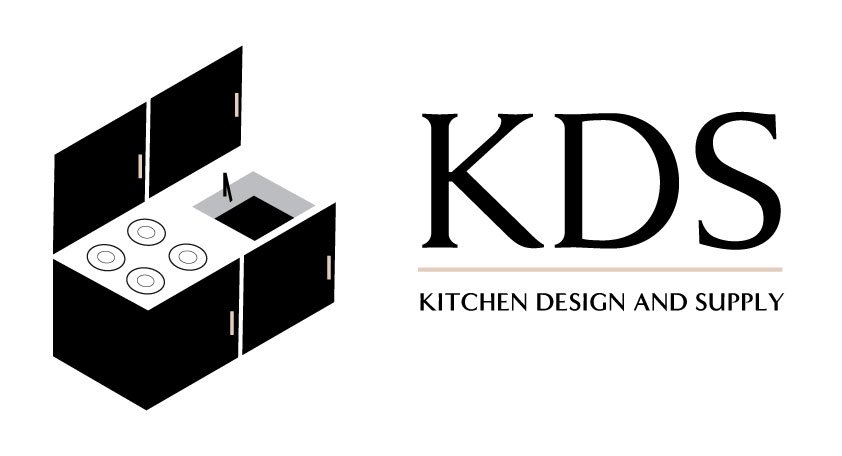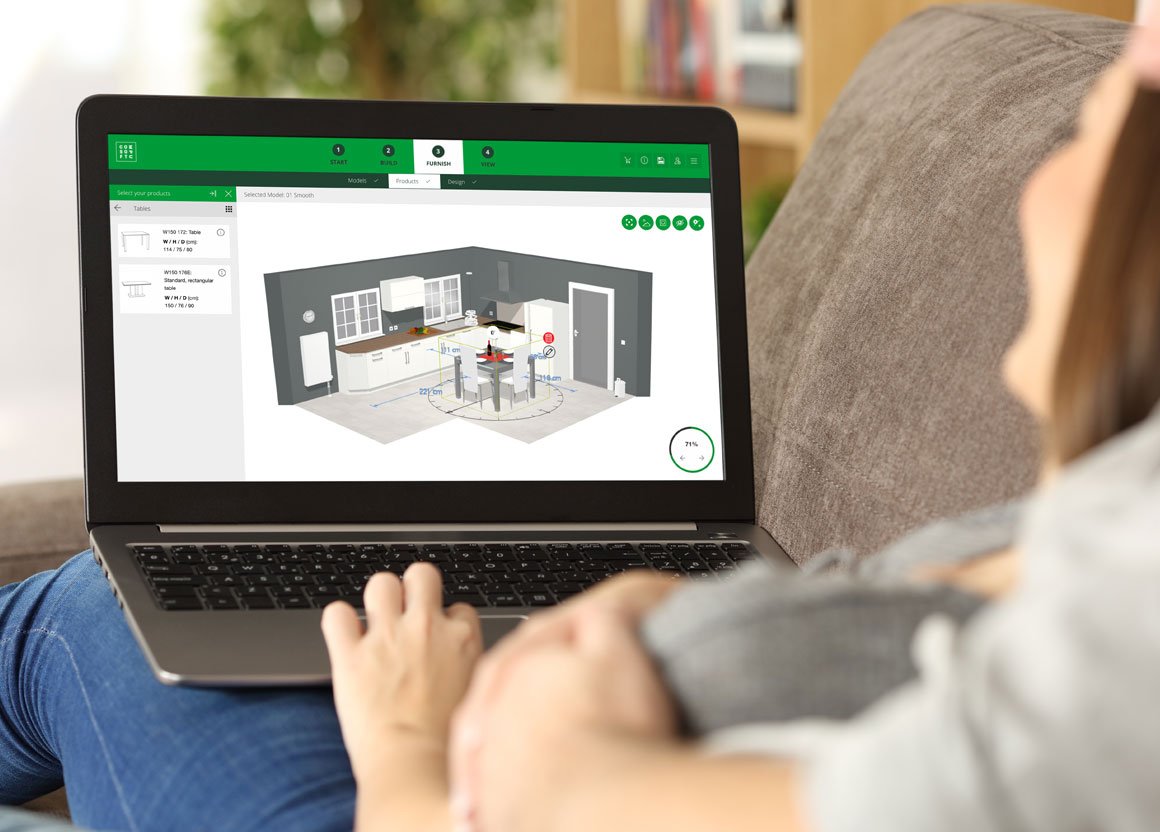Planning Your New Kitchen
Planning a new kitchen can be an exciting, yet overwhelming process. During this blog, we will explore some of the factors to consider when planning your new kitchen. Firstly, what are you trying to achieve with your new kitchen? Is it function, is it style, more cupboards, more drawers, maybe an island? Well, you need to look at the actual size of your current kitchen and consider what will work best for the size of the space you have. That’s not to say you are limited to the layout of what you currently have!
We see lots of extensions, walls being removed, walls being rebuilt and larder units to replace wall cupboards.
Something very important - and some might say the most important is, what is the budget for your new kitchen?
Are you looking to refresh the current design and layout, have you moved into your forever home and now it’s time to create your dream kitchen, or are you completing a refurbishment in a business property such as a buy-to-let, a flip project or an Air BnB.
Whatever you are trying to achieve, we are confident we will have a kitchen that suits your needs Kitchen Ranges.
Kitchen Layout
As you are probably aware, there are many different layouts for a kitchen, but it’s important that you find the right layout and function that is not only right for you, but also the current structure. Something that is always necessary to consider when planning your kitchen layout is the ‘Working Triangle’
Galley Kitchen Layout
Kitchen Island Layout
L Shaped Kitchen Layout
U Shaped Kitchen Layout
So what exactly is the working triangle of a kitchen?
The areas of a kitchen working triangle is a concept used to determine efficient kitchen layouts that are both aesthetically pleasing and functional. The primary tasks in a kitchen are carried out between the hob, the sink and the refrigerator. These three points and the imaginary lines between them make up what the kitchen industry call the working triangle. The idea is that when these three elements are close, but not too close to one another, the kitchen will be easy and efficient to use, cutting down on wasted steps.
Now we have discussed what the working triangle is, let’s have a look at the different layout options for a kitchen.
Galley / Parallel Kitchen
The term “Galley” actually refers to kitchens that you would find either on boats, planes or trains. Galley kitchens are often long and narrow with a central walk way and can be found in smaller homes or apartments. Designed correctly, galley kitchens can incorporate lots of storage options and worktop space. It is best to avoid darker colours and lots of tower units, as this can potentially make your kitchen feel smaller than what it already is. But with the correct lighting - something we will discuss further in the blog, don’t be afraid of bold colours.
Island Kitchen - Our favourite to design
Probably the biggest trend over the last couple of years, and we are not seeing the demand for island kitchens slow down at any point in the future.
Space is an obvious factor to consider if you are planning to incorporate an island in to your kitchen, but again, with the right planning and design, you’ll be surprised at the many options that are available. We do advise a minimum of 900mm walk space around the island.
So why are island kitchens our favourite to design? The kitchen really is the heart of the home, and not only a place to cook but also socialise. It is a place everyone can be together and we will feel the kitchen island really is an integral part. Apart from bringing extra storage, by adding an overhang on the island worktop, it allows you sit and gather round while food is being prepared and its also a great place to complete some work, or the children to complete homework. For social gatherings, the chef of the house can be included while preparing the food and doesn’t miss out on any of the fun!
L-Shape Kitchen
You’ve probably guessed it, the layout is in the shape of a L. With two runs of cabinets meeting a right angle to form a L-shape, this layout is most common is smaller properties and can incorporate ‘the triangle’ really well. Try to balance appliance housing units and wall units with worktop space to not overload your space and making it appear smaller. To make your L-shaped kitchen appear bigger, try using lighter colours and incorporate lots of lighting and if space allows, try to add a small dining table.
U-Shape Kitchen
Like the L-shaped kitchen, but with an additional run of units. This layout is more common in medium sizes homes. U-shaped kitchens are practical and functional, as you can have the hob in the middle, with the sink and fridge either side, creating the perfect ‘working triangle.’
We’ve all searched for that elusive pan lid at some point, or thought we had a ran out of cling film to find right at the back of the cupboard. Using our pull out storage solutions for those corner units, it will allow to make great use of the cupboard space, without anything falling to the back of the cupboard and being forgotten about forever.
One wall Kitchen
As the name suggests, this is where you plan your layout of your kitchen to run along one wall. Usually found in smaller homes or apartments, a one wall kitchen can not only look fantastic but also be very functional and efficient. The use of tall larder and appliance hosing units should be considered with this kitchen layout to maximise storage. The traditional working triangle isn’t possible with this kitchen layout, so try to position the three points just a few steps away from each other.
Peninsula Kitchen
The peninsula kitchen is a great alternative to a kitchen island if you are limited for space. A peninsula can be incorporated in to a L-shaped, U-shaped or even a one wall kitchen. A peninsula offers all of the functionality of a kitchen island, it is just connected to one wall.
So now we have discussed the 6 different layout options for your new kitchen, we need to look at some of the other factors to consider when planning your new kitchen.
Worktops - View our Worktops Blog
There are many different options when choosing a worktop for your new kitchen, and these typically are:
Quartz Worktops
Quartz is a popular choice for kitchen worktops due to its durability and attractive appearance. It is a natural stone, but it is also engineered, so it is even more resistant to scratches and heat. Quartz is available in a wide range of colours and patterns, so it’s easy to find something that will perfectly suit your kitchen.
Granite Worktops
Granite is one of the most popular choices for kitchen worktops due to its durability and attractive appearance. It is a natural stone, which means that it is formed over millions of years, making it very hard and resistant to scratches and heat. Granite comes in a range of colours and patterns, so you can find the perfect look to suit your kitchen design.
Wood Worktops
Wooden worktops are a traditional favourite, and they can be a great addition to any kitchen. They are highly durable and look great when paired with modern or traditional furnishings. Wood is naturally antibacterial, which makes it ideal for food preparation. It also comes in a wide array of colours and grains, so you can find a unique look that suits your kitchen.
Laminate Worktops
Laminate is a cost-effective option for kitchen worktops. It is made from a combination of plastic and paper, so it is relatively inexpensive compared to other materials. Laminate is available in a range of colours and designs, so you can find something that will fit in with your kitchen design. The downside is that it can be prone to scratches and staining, so it may not be the best choice if you are looking for something that is robust and long-lasting.
Lighting
Whether it is natural light or not, lighting in your new kitchen is quite important, not only for for safety but aesthetically. A kitchen can be quite a dangerous place and having the correct lighting will help reduce those risks when cooking and using your kitchen.
Bi-folding doors, a sky lantern or combing the two are great ways to bring some natural light in to your new kitchen. Budget is a factor when making this decision, as they can be both quite costly, however the benefits are worth it in our opinion.
Flooring
Ceramic and Porcelain Tiles
Ceramic and porcelain tiles are a popular option for kitchen flooring. They are durable, waterproof, and resistant to stains and scratches. Additionally, they come in a wide range of colours, patterns, and textures allowing you to achieve any look you desire. Ceramic and porcelain tiles are easy to clean and maintain and can last for many years.Something to consider is ceramic and porcelain tiles can be cold and hard to walk on, which can be uncomfortable for some people. They can also be prone to cracking or chipping if something heavy is dropped on them. Something else to consider are the grout lines between tiles can be difficult to clean and can trap dirt and bacteria.
Natural Stone
Natural stone flooring, such as granite, marble, or slate, can add a luxurious look to your kitchen. These materials are durable and resistant to scratches and stains making them ideal for high-traffic areas. Natural stone comes in a variety of colours and patterns, ensuring that you can find the perfect match for your kitchen.
However, natural stone flooring can more than often be expensive and installation can be challenging especially if the stone needs to be cut to fit your kitchen's layout. Natural stone is also porous and needs to be sealed regularly to prevent staining and can also be slippery when wet, making it a potential hazard in the kitchen.
Hardwood
Hardwood flooring is a classic choice for kitchens. It adds warmth and character to the space and is durable enough to withstand heavy foot traffic. Hardwood flooring can be sanded and refinished multiple times, allowing you to change the look of your kitchen without replacing the flooring.
Hardwood flooring can be susceptible to water damage and stains. Spills should be wiped up immediately to prevent damage. Hardwood flooring can be expensive and installation can be time-consuming.
Laminate
Laminate flooring is an affordable option that can mimic the look of hardwood or stone. It is durable, easy to install and comes in a variety of styles and patterns. Laminate is also resistant to scratches, stains, and fading.
However, laminate flooring can be slippery when wet, making it a potential hazard in the kitchen. It can also be prone to swelling and warping if exposed to moisture, so spills should be wiped up immediately. Additionally, laminate flooring can be difficult to repair if it is damaged.
Vinyl
Vinyl flooring is a popular option for kitchens due to its affordability, durability, and water resistance. It comes in a variety of styles, including those that mimic the look of hardwood or tile. Additionally, vinyl flooring is easy to clean and maintain.
However, vinyl flooring can be prone to fading and scratching, particularly if it is exposed to direct sunlight. It can also be difficult to repair if it is damaged, and some types of vinyl flooring can emit VOCs (volatile organic compounds).
Now that we have a looked at some of the factors to consider when planning your new kitchen, why not take a look at our other article, ‘What to expect during a kitchen installation?’
Thanks for reading.
Why not start designing your new kitchen now with our free online design tool?
Click the link to bring your ideas to life, and see your designs in 3D.


